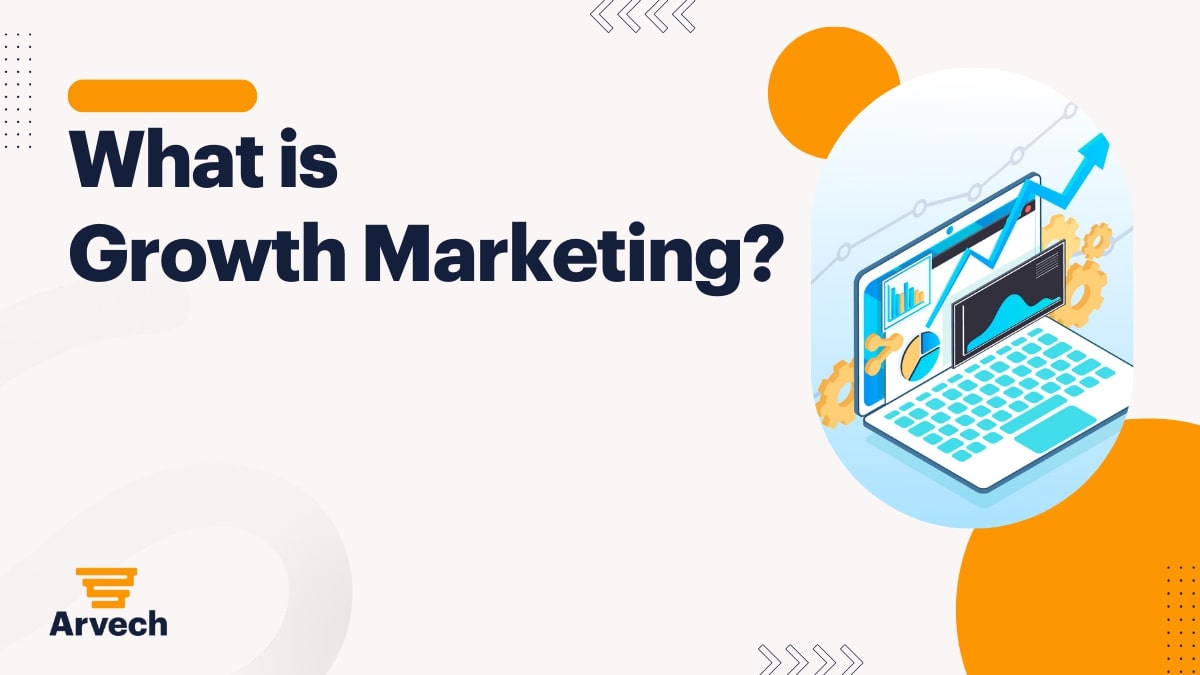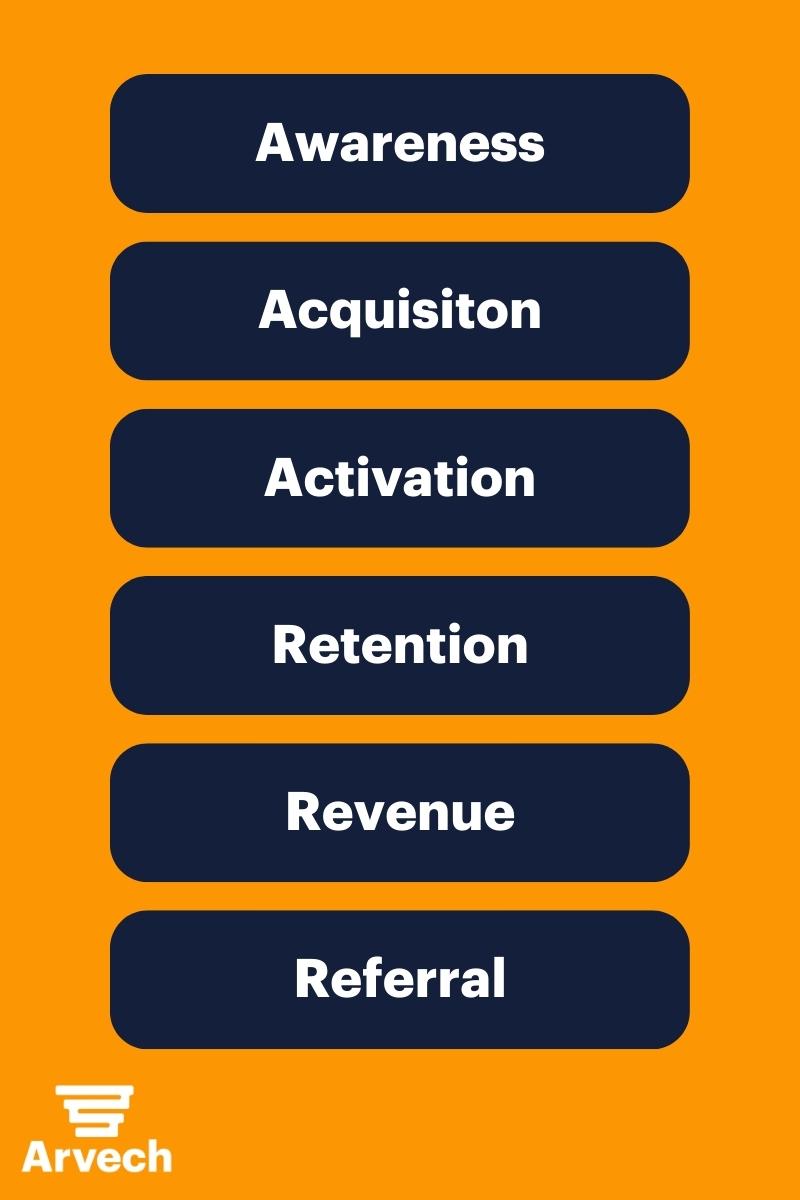What is Growth Marketing? Growth Marketing Approaches and Elements
We will try to summarize what is growth marketing and its components, have been put on the agenda of companies that have grown rapidly and sustainably in the entrepreneurial ecosystem in recent years, and then large-scale companies.
What is Growth Marketing?
Growth Marketing is a fast-paced testing and data-driven marketing approach that enables you to sustainably achieve your measurable goals. We can define growth marketing as a long-term strategic methodology that leads brands to achieve sustainable and measurable growth.
While marketing actions mainly focus on increasing website traffic and sales, growth marketing, which acts with end-to-end funnel optimization, adopts a data-driven and holistic approach.
Today, marketing processes are carried out under traditional and digital marketing concepts. Growth marketing mainly focuses its digital marketing processes on increasing the company’s revenue, reducing cost and increasing customer lifetime value and satisfaction. The best growth marketing professionals leverage multiple skills and disciplines to drive results, such as analytics, testing, psychology, design, usability, technology, copywriting, and more. The growth marketing model, in which budget and all marketing actions are based on a metric, has become more popular, instead of wasted advertising expenditures that only try to “just inform you” about a product or service. Growth marketing analysts and professionals are used to make testing, measuring, and making data-driven decisions in everything they do.
When Did Growth Marketing Appear?
Although many concepts related to growth marketing emerged by triggering each other in recent years, Sean Ellis mentioned the term “growth hacker” in 2010.
While Sean Ellis was working for Dropbox, most of his activities were developing the customer database. Feeling too caught up in the generic term “marketing”, he decided to completely rebrand his business and “Growth Marketing” was born. In the following periods, important names such as Ryan Holiday, Aaron Ginn and William Griggs underlined this concept and expressed it in many places, produced content or wrote lots of books about it, and conducted many written and audio studies on the subject of Growth marketing.
AARRR Methodology, Pirate Funnel, and Pirate Metrics
Dave McClure, founder of 500 Startups and well-known in the startup world, coined the term “Pirate Metrics” (AARRR) in 2007. AARRR, whose expansion is summarized as follows, became an inspiring methodology for hundreds of startups.
AARRR: acquisition, activation, retention, revenue and referral
We can briefly summarize the phases of the model that come out with the stages of acquisition, activation, retention, referral and revenue, which express the steps of the pirate metrics funnel:
- Acquisition: Customers who found the product and came
- Activation: Customers who experience the core value of the product
- Retention: Customers who come back to use the product again
- Revenue: Customers paying for the product
- Referral: Customers who share the product with others
Apart from this video by Dave McClure, there will be no chance to explain better this part of our content:
Pirate Funnel can be interpreted differently by various experts and businesses. For example, depending on the business model, acquiring returning customers may be more valuable to you, while discovering new potential customers may be another important goal. Acquisition and Activation, on the other hand, are open to interpretation, because the marketer setting up the steps might consider ‘Acquisition’ as acquiring a new customer rather than a site visit, and ‘Activation’ as a WOW / AHA moment rather than just signing up.
The Awareness name wasn’t there if you noticed in Dave McClure’s original Pirate Funnel, but it was later included by the Growth Tribe in 2016.
So, what is the main value of using this funnel in our business?
- AARRR is one of the most popular growth marketing frameworks. It covers acquisition, activation, retention revenue, and referrals.
- AARRR growth marketing strategies and metrics span the entire customer lifetime, not just the campaigns used to acquire them.
- Setting up this funnel correctly and passing the customer through this funnel will allow you to see the deficiencies in your roadmap more clearly and to determine which step you are stuck in marketing actions.
- As a result, it will also help you see the right ways and areas of your marketing investment and help you grow in the long term.
Traditional Marketing vs. Growth Marketing
Let’s go from the basics of the subject, what is Marketing? Let’s remember this discipline first:
What is Marketing?
Marketing is the science and art of exploring, creating, and delivering value to satisfy the needs of a target market at a profit. Marketing identifies unfulfilled needs and desires. It defines, measures and quantifies the size of the identified market and the profit potential. It pinpoints which segments the company is capable of serving best and it designs and promotes the appropriate products and services (Kotler).
According to the American Marketing Association (AMA) Board of Directors, Marketing is the activity, set of institutions, and processes for creating, communicating, delivering, and exchanging offerings that have value for customers, clients, partners, and society at large.
Hubspot summarizes it here: Marketing refers to any action a company takes to attract a target audience to its products or services through high-quality messaging. Marketing aims to deliver authentic value to potential customers and consumers through content to demonstrate long-term product value, strengthening brand loyalty and increasing sales.
In summary, Marketing is trying to understand the needs and expectations of consumers or potential buyers and designing and presenting services/products in line with these elements.
Today, traditional marketing and digital marketing fields are separated within themselves, but they have also become units that can work together.
When we say traditional marketing, the fields and channels we actually refer to are as follows: Word of Mouth Marketing (WOM), Television, Radio, Newspaper, Brochure, Outdoor, Telemarketing, Events, Guerilla Marketing and Viral Marketing.
In this part of the content, we will try to convey the most fundamental differences of growth marketing from traditional marketing.
Top Advantages of Growth Marketing
- Growth marketing is a long-term and strategic methodology that leads brands to achieve sustainable and measurable growth.
- While traditional marketing actions mainly focus on increasing website traffic and sales, growth marketing acts with end-to-end funnel optimization adopt a data-driven and holistic approach.
- Today, marketing processes are carried out under traditional and digital marketing concepts, especially in corporate companies. Growth marketing, on the other hand, mainly focuses its digital marketing processes on increasing the company’s revenue, reducing cost, and increasing customer lifetime value and customer satisfaction.
- In traditional marketing, measuring the return on your advertising investment is very difficult, while in growth marketing, you can track, measure, and optimize the return on all advertising investments.
- Finally, growth marketing benefits include more analytical decision-making through data, scalability, cross-unit collaboration, and higher revenue.
Core Elements of Growth Marketing
So far, we have tried to briefly summarize what is growth marketing and its differences from other marketing models. So where should managers who want to incorporate growth marketing into their business or venture start? How should they construct this methodology, how should they create growth teams?
- Growth Strategy
- Situation Analysis, Resource and Team Building
- Planning
- Actions, A/B Tests and Tracking
- Results, Reporting and Optimization
- Growth Tactic Creation and Development
1. Growth Strategy
Growth marketing strategy is perhaps the most crucial and critical process among these elements or components. To build the strategy, you should include an expert in your team who has experience in this field and has developed and implemented growth strategies before. You must correctly convey your business model, product and goals and make a good roadmap. You can also get support from growth marketing consultancy companies like Arvech. Since this leg is the most important part of your investment among these elements, you should make the right decision as much as possible and proceed with a plan that your teams agree on, such as sales, product, business development and finance. Do not forget that the growth marketing strategy will be a structure for your marketing unit and all your company and units will be involved, followed and implemented.
2. Situation Analysis, Resource and Team Building
After building the growth marketing strategy, you will actually have a roadmap and hundreds of tasks and actions that you need to complete and implement. So, how will you execute or implement them alone or with your existing team?
First of all, we can suggest that the main topics that should be implemented in the strategy should be determined and divided into small silos. For example, you need to prepare appropriate flows for your brand in email marketing. Here, there is work to be done in more than one sub-title. Determining the tool you will use for email marketing, purchasing it (of course, you can use it for free), making the necessary installations in this tool, creating formats and templates suitable for your own brand identity, and creating the content of the email campaign or flow, preparing the images you will use in the campaigns, creating your email database, You get a long list of tasks such as segmenting, listing, tagging, drawing and testing your email sequences.
Therefore, you will need to plan the sub-items of the main work items by month, week, and then day-to-day, starting with the priority works in your roadmap. You will have to review the human resources assigned to these jobs you have planned, establish a growth team from scratch if necessary, and complete your human resources only in the missing areas if necessary.
If we summarize all that we have written, First of all, clarify your business plan work-task volume (component-based), then review the budget and resources you have, get the human resources to do the relevant work, then provide the tools and materials you need to speed up or automate which parts of these works.
3. Planning
In the implementation part of the growth strategy, accurate planning and following it day-to-day will be essential processes in the action part of the work. Here, sprinting, when necessary, moving forward without dropping the ball on the ground, and working with agile are as important as the previous items.
Planning is actually a process that each growth marketing team member must implement on their own.
In the planning stage, there must be a table or a list that the team must track. There are free tools (such as Trello or Notion) for it. Here, both the strategy roadmap should be on the upper scale, and the monthly plans and their weekly breakdown should be included to monitor what needs to be completed at which step and which growth actions we can implement after the relevant steps.
4. Actions, A/B Testing and Tracking
We established our strategy and planned the team and resources according to the needs analysis. We follow all our works phase-by-phase in certain tables. Now we are ready for the most popular part of the job: taking action, implementing, A/B testing and following our established plans and tactics!
The important thing here is to do a lot of testing, whatever action you take, and to invest more in the versions that benefit you the most in terms of metrics. You will need to improve them, optimize and retry your inoperative tactics, record your learning based on these tactics for a certain period of time, and pause them if they do not work while producing new tactics for other opportunities.
5. Results, Reporting and Optimization
The final planning phase necessarily results in reporting and presenting the work to the manager or decision-makers.
After the process, which is drawn to the pre-determined target metrics, their outputs and results must be reported, and the plans for the upcoming period must be updated quickly in line with this report, margins should be left where the opportunities seen can be evaluated, and on the other hand, optimization studies should be focused on the areas where investments will continue.
6. Growth Tactic Creation and Development
We can think of this matter as a timeless process. Tactics can also occur in a brainstorming meeting where you get together with the team, or they can be an opportunity you notice in the market. They can also be inspired by the works done in different verticals, in ways you can use trend trends and channels. While producing tactics, they must be measurable, based on a certain period of time, suitable for your target persona, and able to go directly or indirectly.
Involving the entire company, not just the growth marketing team, in the production or development of tactics will allow you to approach tactics from different perspectives and think creatively.
Conclusion:
In this article, we tried to explain what growth marketing is. Growth marketing must be handled end-to-end by experts in this field, its structure must be established, and all growth funnel operations must be iteratively and analytically structured.
As Arvech, we first analyze the current situation they need for the growth marketing activities of the companies we work with, understand their business model, revenue model and products/services, and then work on their growth strategies. Within the scope of the growth marketing strategy we have prepared specifically for the relevant brand, we continue all our actions with growth marketing funnels with a result-oriented approach. You can contact us anytime for your e-commerce small business growth plan, b2b tech company (SaaS or service-based model) growth strategy or corporate enterprise growth planning.



